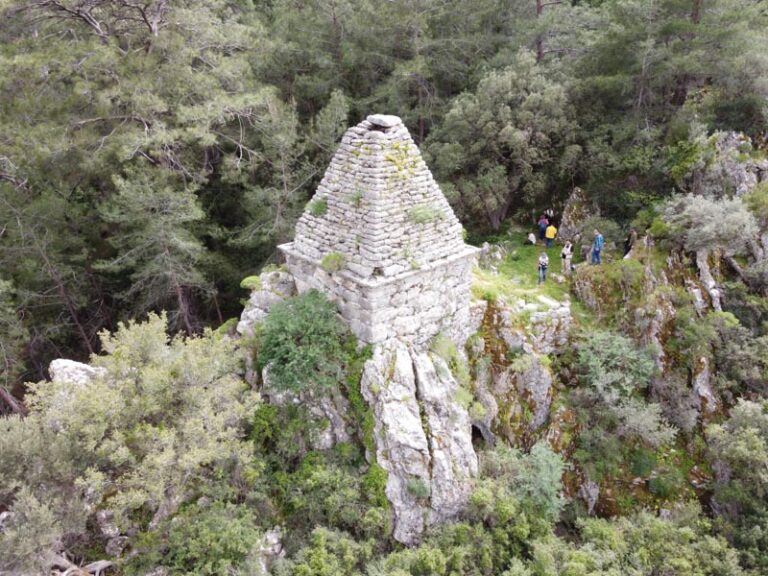The inscription that is exhibited in Marmaris Castle, Show us that the 3rd century BC tomb belongs to the boxer Diagoras It is a small prototype of the Halicarnassus Mausoleum, one of the 7 wonders of the world with its pyramidal structure
Pyramidal Tomb, was registered as a monument in 1990.
There is a staircase leading to a larger terrace from a small terrace on the south side of the tomb. The masonry of the burial chamber consists of rough-cut polygonal stones. A steep pyramidal roof with a straightened end covers the ceiling of the cubic tomb structure. It was determined that the tomb structure was covered with a chalky white plaster. Traces of four sitting lions were found on the sill at the base of the pyramid. On the 8 rows of inscriptions on the entrance of the tomb, which is dated to the 3rd century, it is written that lions protected this place.
“You white-toothed beasts, stand in this clean place. I will stand on the highest place and stand guard so that a traitor does not come and do harm. Because it is the tomb of a man named Diagoras who died in this war, his goddess-like wife named Aristomacha by his father. He was known for his excellent children and chaste ideas.”
The port of the city is under sea with some building remains today. In this area, 3 structures are prominent. There are the remains of a rectangular building, which is defined as a warehouse structure and divided into sections, a square-shaped structure whose walls have survived to the present day and defined as a tower, and a large structure that is presumed to have been used as a port administration.
It is possible to talk about at least five phases identified so far in the ancient city. Based on the masonry and stone technique, 4 of them are separated from each other. Byzantine, Hellenistic, Archaic and Cyclobic (late bronze-early iron) walls were used during the periods. During the first settlement periods, three areas can be mentioned in the city. Lower fortress, upper fortress and settlements on the western slope. The walls of the upper castle reach a height of 8 meters in some places. Except in this area, the tower is not found. The upper and lower castles were used more intensively in the last stage of the settlements, namely in the Byzantine period.









